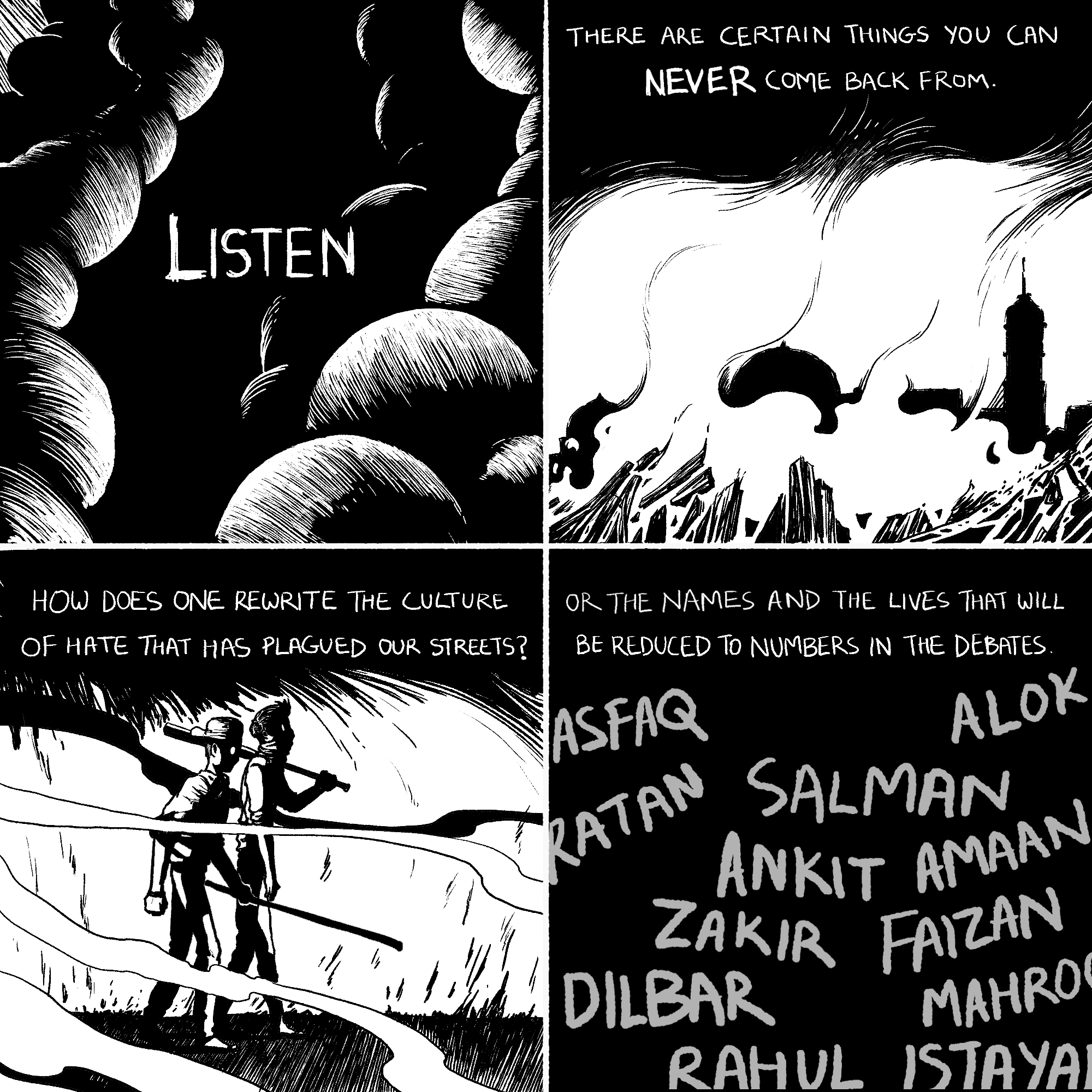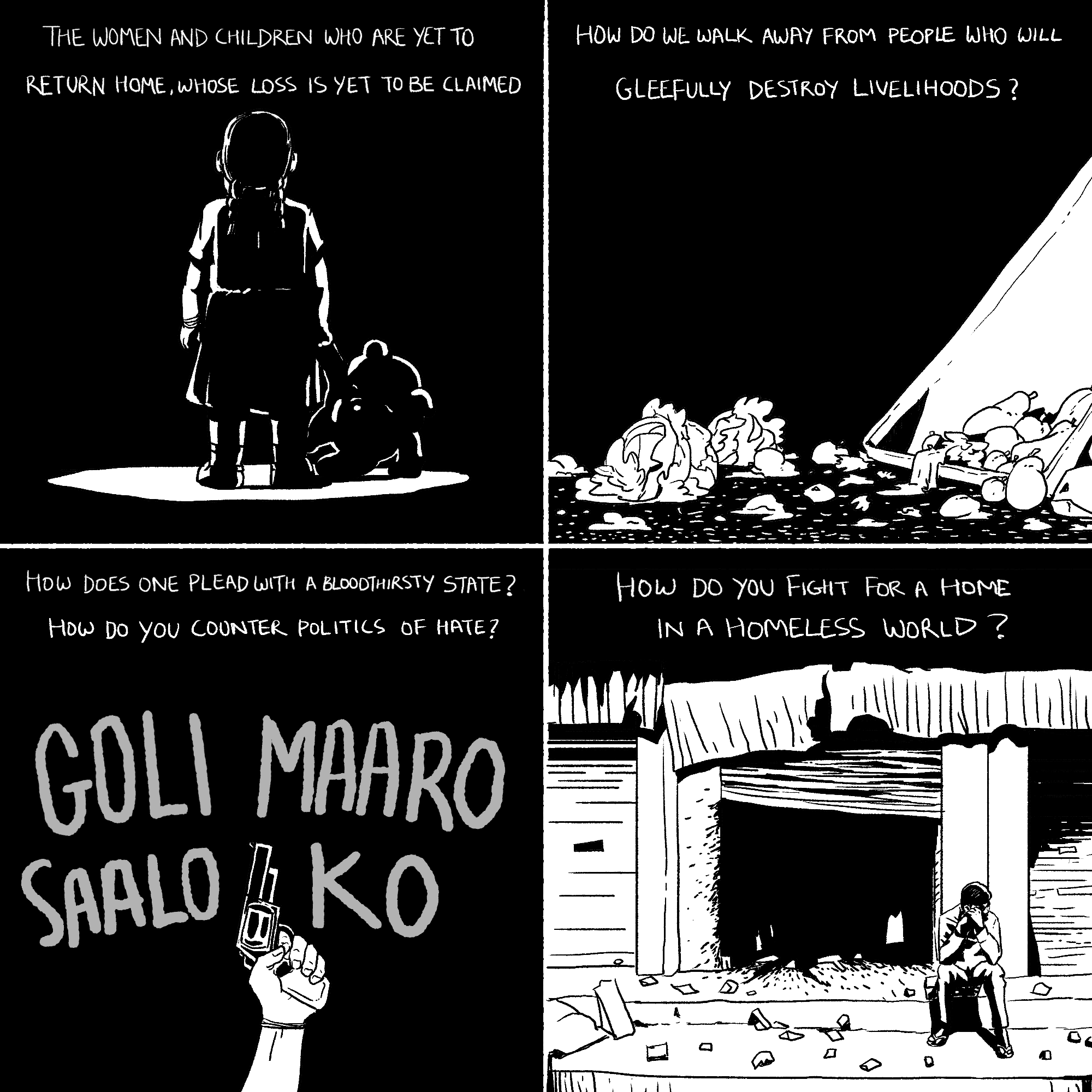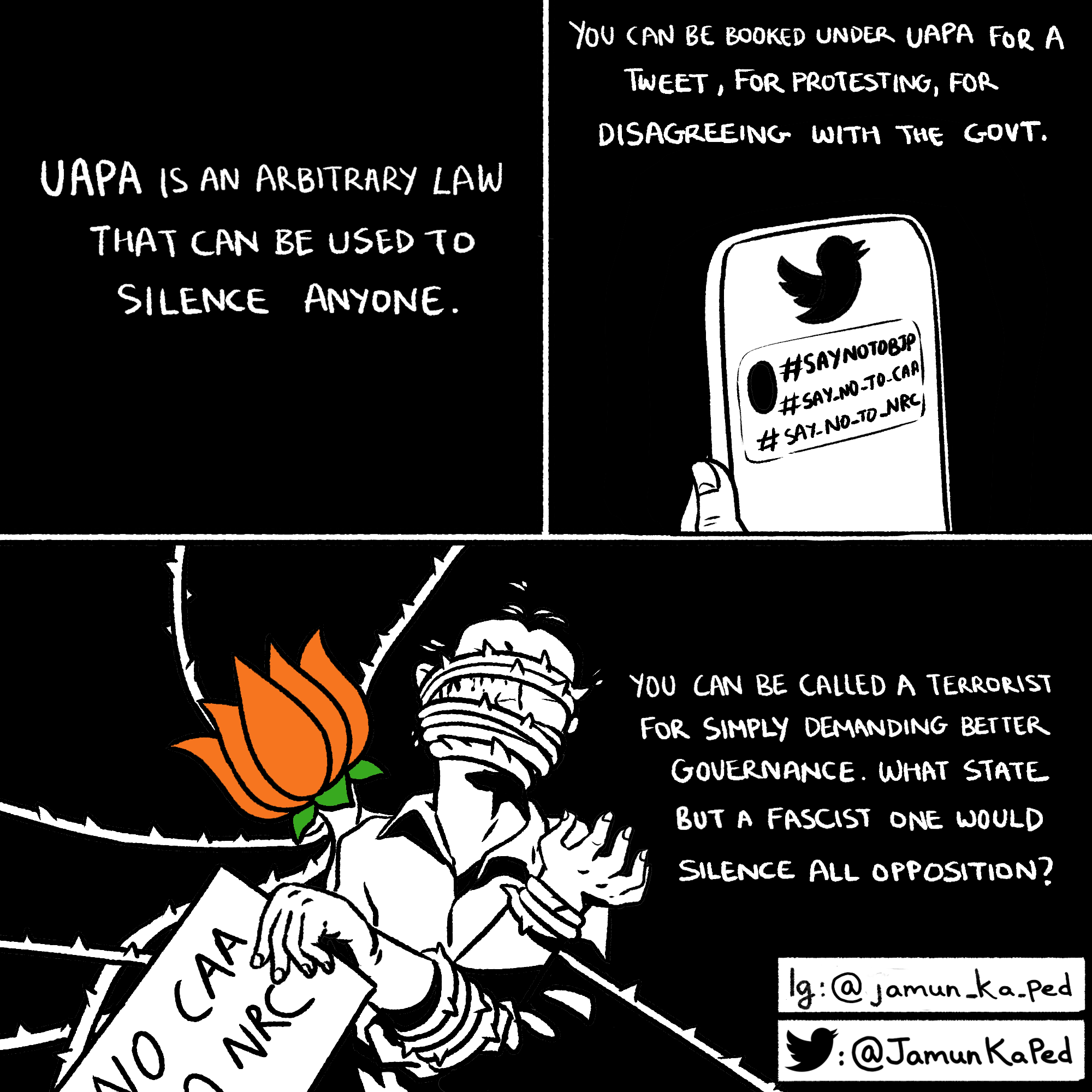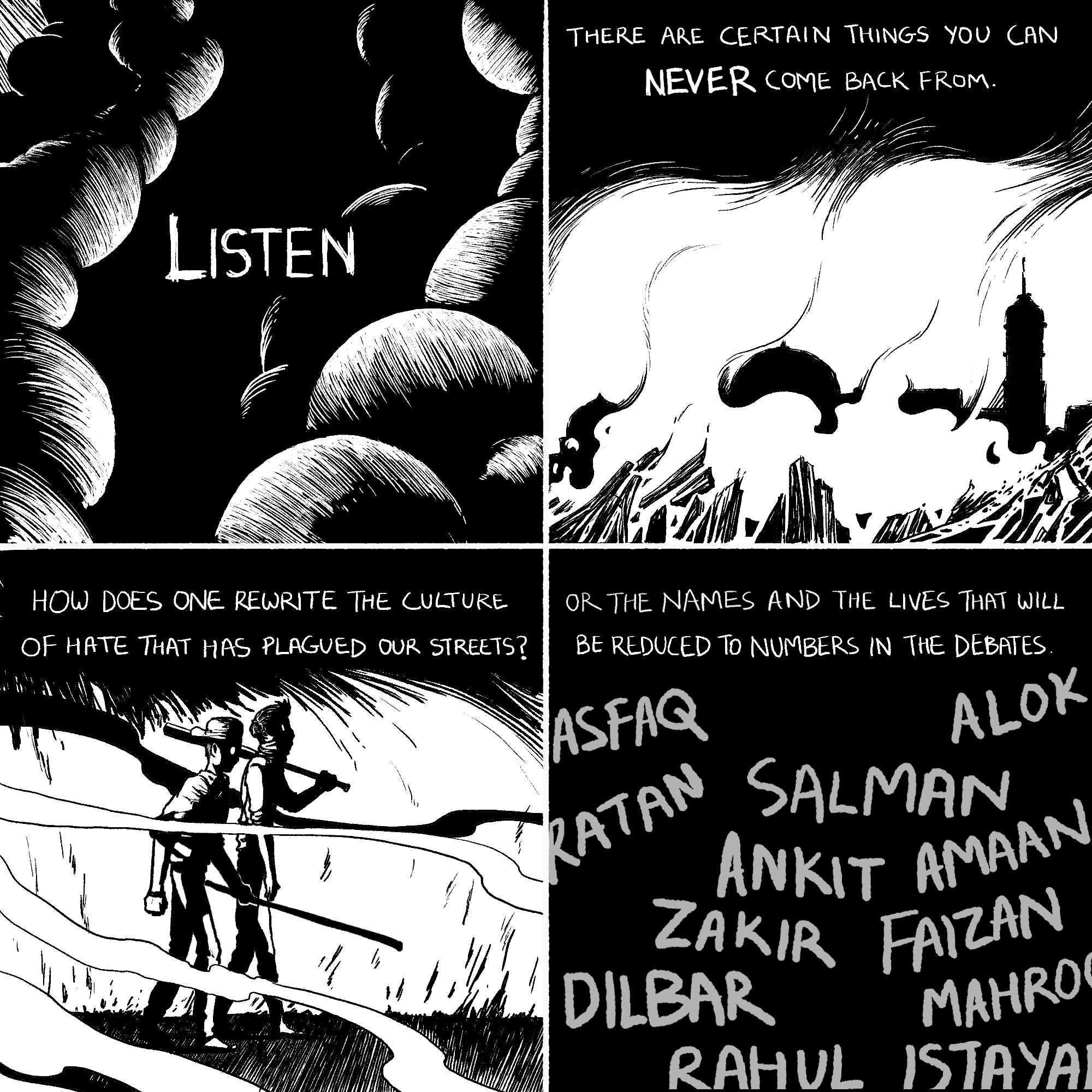With the world reeling from Covid-19, its now more important than ever to look at how systems of violence were embedded in many of the world’s governments and economies before the crisis:
- A China that survives by suppressing free expression, silenced Dr. Li Wenliang when he tried to alert China’s Medical Community to Covid-19.
- A United States with a democracy rotted by money, elected a billionaire president with billionaire backers, is reopening an economy that will kill hundreds of thousands to make sure the rich get richer.
- And an India, that elected a leader who supervised a massacre is now jailing, prosecuting or simply sacrificing India’s poor and Muslim communities to this Virus.
To discuss India, I’m joined by Jamun Ka Ped: made up of Meher Manda and Mayukh. We look back on the fascist riots that scarred Delhi this winter, the brutality of the BJP towards Muslims, and potential ways forward after Covid-19 through protests or dissent.
Part 2 of our interview can be read here!

(This comic refers to the Delhi Riots, a series of paramilitary actions against Muslims in Delhi that were endorsed by the Modi’s BJP, Partisan Media and Far-right Hindu Fascists. A good comparison would be the Pogroms against Jews or the Hamidian Massacers against Armenians – blood in the water to bring out the fascists and encourage hatred, a precursor to genocide. )
Asia Art Tours: For those unfamiliar, could you introduce yourselves as well as your project: Jamun Ka Ped? What other protest art or comics had influenced you prior to starting this project?
Meher: I’m moved by how words and images have taken centre stage in the recent political movement. I’m moved by the poetry of Amir Aziz, Hussain Haidry, and Varun Grover, by the photography of Masrat Zahra and Mehar Bandazz, by the rallying cries that have been sprayed on bricked walls, painted on protest posters, and embodied in the people’s movements. Everyone, from the writers and artists of Kashmir, the students of Jamia Milia and Aligarh Muslims University, the women of Shaheen Bagh, and the journalists who’ve painlessly covered the movement is an inspiration.
Mayukh: Definitely Marjane Satrapi, the author of Persepolis, Joe Sacco and his graphic journalism, particularly his work on Palestine and the Gaza strip. Closer home, definitely, Rachita Taneja’s work on Sanitary Panels.

(Another depiction of the aftermath of the Delhi Riots. Modi, like Trump or Hitler is still in power as he has the support of domestic and international billionaires who expect a return on investment. This is the violence and horror they are willing to tolerate in order to collect a profit).
AAT: What risks, to one’s career or family & friends, does one take in speaking out about the violence in India? Have you suffered any consequences for your activism?
Meher: There is legitimate danger about speaking out against institutional and majoritarian forces, particularly if you look at how artists, academics, and activists are being hounded under the draconian UAPA (Unlawful Activities Prevention Act), which allows the administration to prosecute and silence dissenters. There is also the actual danger of physical harm, as one has seen with journalist Gauri Lankesh and her murder at the hands of right wing goons. But as we’re still young and fairly digital, apart from the general barrage of messages on our social media, there haven’t been real threats to our safety.
Mayukh: The privilege of being in the US protects us from immediate physical threat, certainly. We’re less vulnerable than those working on the ground, who are visible faces of the movement. That’s why we take responsibility in amplifying the voices, and pushing the envelope on the conversation.

(The CAA and NRC bills while complex, can be explained to American readers as ‘ Jim Crow’ laws for India’s Muslims. Narendra Modi’s BJP and their supporters in the Fascist RSS Organization, want to create an India that is free of the 200 million Muslims who are Indian Citizens. To understand India’s violence and the BJP’s Fascism, I highly recommend our podcasts with Eviane Leidig, Neha Dixit or Debasish Chowdhury)
AAT: Could you discuss how artists have become involved in protests against the CAA/NRC and Narendra Modi’s desire for Hindutva? Are there art forms we can use to protest Hindutva that historically have included people from all faiths and backgrounds?
Meher: I’m curious about this because there have been few forms that have been all-inclusive. I can think of people’s theatre and argue that poetry — despite its power and critique consolidated with the savarna academic class — when effective, has the power to move and channel conversation. I also think music — even if they’re corny Bollywood songs on secularism — can put the point forward.
Having said that, there is art to protest culture, from the chanting of an anthem, to the drawing of a banner, and the communication of a message that can push people to leave the safety of their homes and the dependability of their professions to take to the streets and fight the power. A protest doesn’t hinge on a face but on collectivism, and there is something to be said about the power of that.
Mayukh: The history of graffiti is rich in terms of speaking truth to power. One can look at the graffiti around Shaheen Bagh and JNU for reference. Art on social media too can be powerful in its reach and memetic capacity (people sharing) without putting oneself in direct physical danger. Considering that the ruling party has such consolidated control over social media and whatsapp, challenging them on that platform and empowering voices that are vulnerable to doxxing like women and Dalits is important.

(Perhaps the worst image of the Delhi Riots, Hindutva supporters climbed to the top of a mosque and placed the Hanuman flag of Hindu Nationalists atop the Minaret. This would be like climbing to the top of a synagogue, and placing a Nazi flag. As India, China, and the USA descend into fascism, so goes the world. What happens next is still in our hands.)
AAT: For the recent Muslim Pograms/Islamophobic violence in Delhi, how are you processing these horrific events and do you plan to express them in your art?
Meher: We documented them in our webcomic without mincing words or taking an arbitrary middle ground. Our priorities are clear and our stance is clear. It was a pogrom, and wording it in any neutral way is detrimental to ground reality.
With every such case that arises, we ensure to be as clear as possible.
Mayukh: These events make creating art a moral imperative. We need to push ahead with grim determination because if we don’t, we are accepting the present situation as a status quo. The present dispensation doesn’t care for opposition voices – this was evident for a while. Our plan is to document all the stories about the pogroms, amplify the voices telling these stories and make sure that they stay in the light and are not forgotten.
Meher Manda: is a poet, short story writer, journalist, and educator from Mumbai, India, currently based in New York City. She earned her MFA in Fiction from the College of New Rochelle where she was the founding editor-in-chief of The Canopy Review. She is the author of Busted Models, the chapbook of poems from No, Dear Magazine in Fall 2019. Her work has appeared and is forthcoming in Catapult Magazine, Peach Magazine, Hobart Pulp, Los Angeles Review, Cosmonauts Avenue, and elsewhere.
Mayukh: is a Brooklyn-based animator-filmmaker who has worked extensively in advertisement space for clients such as IBM and Honda. He has made short films for NASA and #MeTooMVMT and his work has been displayed in film festivals across the world including in Sundance Film Festival.
For more on Jamun Ka Ped please head to their Social Media:
Twitter here – https://twitter.com/JamunKaPed
And Instagram here – https://www.instagram.com/jamun_ka_ped/

